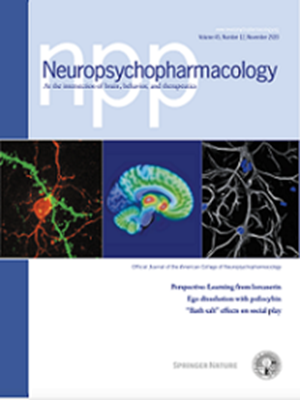NAc-DBS selectively enhances memory updating without effect on retrieval
IF 6.6
1区 医学
Q1 NEUROSCIENCES
引用次数: 0
Abstract
Deep brain stimulation (DBS) has emerged as a widely used therapeutic option when pharmacological treatments prove ineffective or refractory for psychiatric patients. The nucleus accumbens (NAc) represents a frequently targeted site in DBS interventions due to its demonstrated safety profile and therapeutic efficacy in obsessive-compulsive disorder, major depression, and anorexia nervosa. However, limited mechanistic understanding hampers its broader clinical applicability. This study sought to delineate the distinct behavioural dimensions modulated by NAc-DBS, its impact on distinct facets of memory, and to elucidate the underlying brain-network mechanism of action. We developed a novel spatial navigation task for rats and employed a high-dimensional behavioural analysis complemented by fMRI to dissect the cognitive, behavioural and neurobiological effects of NAc-DBS. Active NAc-DBS in male rats produced a selective enhancement of long-term memory encoding without affecting memory recall or working memory. We found a small but statistically significant rewarding effect of NAc-DBS, with no detectable impact on motor or stress-related behaviours. Sustained neuronal activation in the NAc, septum, entorhinal and insular cortex demonstrated no desensitisation to chronic NAc-DBS, which triggered a functional reorganisation among dopaminergic-related structures. These findings suggest that NAc-DBS induces a functional reorganisation in the mesocorticolimbic system, potentially mimicking a dopaminergic novelty signal to enhance memory updating. This provides a mechanistic basis for the therapeutic use of NAc-DBS, particularly in improving cognitive flexibility in psychiatric disorders.

NAc-DBS选择性地增强记忆更新,但不影响检索。
脑深部电刺激(DBS)已成为一种广泛使用的治疗选择,当药物治疗证明无效或难治性精神病患者。伏隔核(NAc)因其在强迫症、重度抑郁症和神经性厌食症中的安全性和治疗效果而成为DBS干预中经常靶向的部位。然而,有限的机制理解阻碍了其更广泛的临床应用。本研究旨在描述NAc-DBS调节的不同行为维度,其对记忆的不同方面的影响,并阐明潜在的脑网络作用机制。我们开发了一种新的大鼠空间导航任务,并采用功能磁共振成像辅助的高维行为分析来剖析NAc-DBS的认知、行为和神经生物学效应。活性NAc-DBS在不影响记忆回忆和工作记忆的情况下,选择性地增强了雄性大鼠的长期记忆编码。我们发现NAc-DBS有一个小而有统计学意义的奖励效应,对运动或压力相关行为没有可检测到的影响。NAc、中隔、内嗅和岛叶皮层的持续神经元激活表明,慢性NAc- dbs没有脱敏,这引发了多巴胺能相关结构的功能重组。这些发现表明,NAc-DBS诱导了中皮质边缘系统的功能重组,可能模仿多巴胺能新信号来增强记忆更新。这为NAc-DBS的治疗应用提供了机制基础,特别是在改善精神疾病的认知灵活性方面。
本文章由计算机程序翻译,如有差异,请以英文原文为准。
求助全文
约1分钟内获得全文
求助全文
来源期刊

Neuropsychopharmacology
医学-精神病学
CiteScore
15.00
自引率
2.60%
发文量
240
审稿时长
2 months
期刊介绍:
Neuropsychopharmacology is a reputable international scientific journal that serves as the official publication of the American College of Neuropsychopharmacology (ACNP). The journal's primary focus is on research that enhances our knowledge of the brain and behavior, with a particular emphasis on the molecular, cellular, physiological, and psychological aspects of substances that affect the central nervous system (CNS). It also aims to identify new molecular targets for the development of future drugs.
The journal prioritizes original research reports, but it also welcomes mini-reviews and perspectives, which are often solicited by the editorial office. These types of articles provide valuable insights and syntheses of current research trends and future directions in the field of neuroscience and pharmacology.
 求助内容:
求助内容: 应助结果提醒方式:
应助结果提醒方式:


